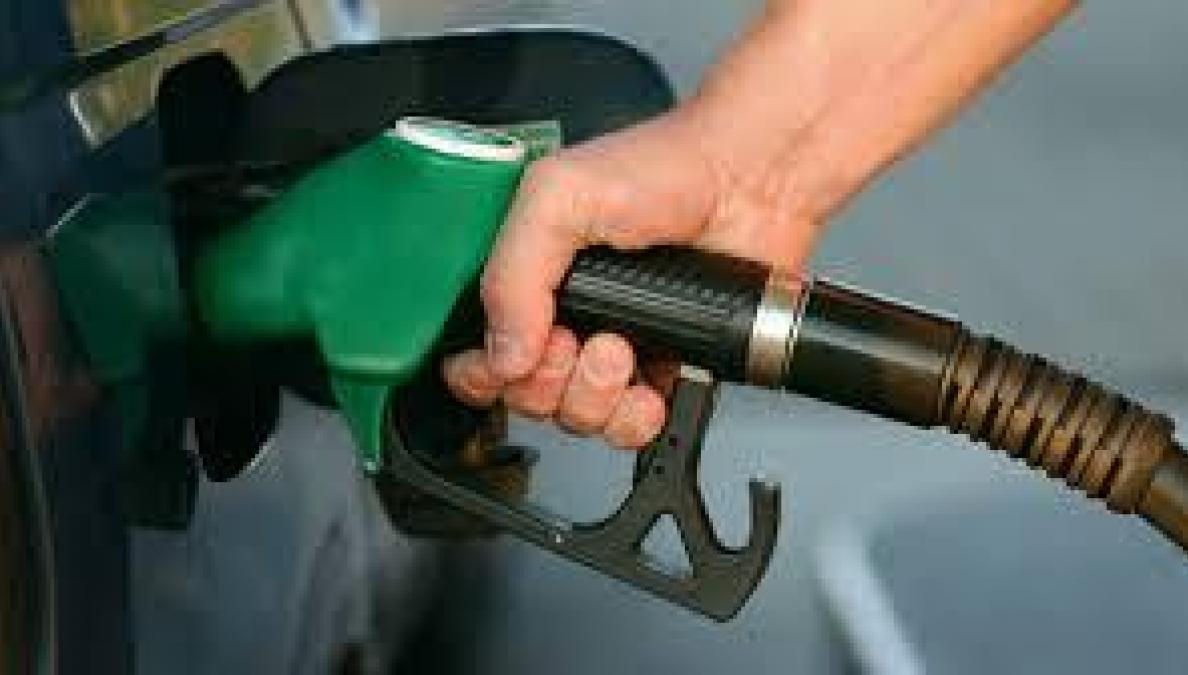The Race Car Factory knows the quality of diesel fuel varies greatly from state to state and station to station. The present additives available are petroleum based and do little or nothing in the way of making your engine last longer, or run more efficiently. Remember that when refining the fuel from crude oil, they take most of the base chemicals that are in common additives out. Don’t pay money to dump them back in. Now with Diesel fuel reaching all time highs, more than ever, you need our technology.
There is a better more cost effective way that was developed for military applications in both extreme heat and extreme cold.
RCF Diesel Formula is designed for all Diesel engines’ old or new as replacement of high Sulfur fuel benefits are needed. As of 7/1/02, Sulfur levels in fuel were reduced to 500 ppm. October 15th 2006 Phase III saw 15 ppm.
Sulfur is your lubricant in diesel fuel as well as a retardant for bacteria and fungus.
RCF Diesel Formula is a multi-benefit multi-function catalyst that raises Cetane power levels, cleans and maintains the entire fuel system, has an active detergency to dissolve gum and varnish , and produces a plentiful upper cylinder lubricant which replRCF sulfur (better than 3000 ppm Sulfur) for lubricating injector pumps and injectors while eliminating valve/guide wear 360% & bore wear by 600%.
RCF Diesel Formula chemically changes 43 cetane fuel to 45+ cetane , producing more horsepower, while lowering cold weather pourpoint to as much as -19 o F. It contains a quality safe high detergent non-alcohol fuel injector cleaner to dissolve carbon buildup, wax, and crystalline problems in fuel systems.
RCF Diesel Formula maintains fuel systems with an active detergency to dissolve gum and varnish for trouble free operation. It produces a copious upper cylinder lubricant that reduces cylinder/bore wear by 600% while virtually eliminating valve recession.
This is far beyond outdated Sulfur fuels. The upper lubricant plus more power produces higher fuel mileage, reducing fuel costs and maintenance. Smoke is also reduced an average of 50%.
RCF Diesel Formula contains no Sulfur, maintains storage tanks, and is EPA Registered
EPA PHASE III AND WHATDOES IT MEAN TO YOU AND YOUR ENGINE! ??
EPA Phase III New specifications will cause potentially disastrous complications to occur. The lubricant content in the fuel will be reduced an additional 97% to 15 ppm from the present 500 ppm. This simply is not enough lubricant to provide even adequate performance. This will cause very accelerated bore and ring wear, stem and guide wear, and injector pump and injector wear as well as overheating. Bacteria, fungus and yeast will be even more of a problem and drivability due to the reduction of Cetane and BTU in the fuel will cause an increase in diesel fuel usage. All of this will combine to greatly increase the cost of operation. To understand the problem, we must look at the regulations and their focus on a higher and cleaner standard with regard to four problematic emissions.
These are (1) hydrocarbons (HC), (2) carbon monoxide (CO), (3) oxides of nitrogen (Nox), and (4) particulate matter (PM). Realistically stated, in Phase III, emissions must be 65% cleaner than 1998 levels. To help clean the air, ULSD(Ultra Low Sulfur Diesel) became pervasive in all fueling stations by October 15th 2006. It is time to be proactive in solving the problem.
Here are a few examples of competing technologies that have come to the marketplace with the intent of solving the stricter emission level goals:
One of these technologies is to retrofit all existing equipment with catalytic converters and water cooled EGR (exhaust gas recirculation) systems to attempt to filter the four emissions. It is estimated that it will cost in the neighborhood of $50.00 per horsepower to accomplish this. This would entail a 150 HP engine to be retrofitted for a cost of about $7,500.00 per power unit. This will not include bacteria, fungus, yeast or lubricity of the fuel, but will in fact result in a shortened life span of the engine and all related components. It will also affect fuel mileage and be a costly “Band-Aid” that will not address the oxides of nitrogen emissions.
Another technology is to create water-injected urea traps to filter and catch the oxides of nitrogen. This technology employs the injection of ammonia into the exhaust to “treat” the exhaust emissions. This will not reduce the other emissions of hydrocarbons, carbon monoxide nor particulate matter. The urea would have to be carried in relatively large quantities, and modification of the truck will be necessary to accept this. Furthermore, this does not address any of the other fuel problems outlined and discussed previously. Nor does this address the added expense of injecting water into the exhaust system.
Biodiesel is yet another technology that has been popularized in recent years as a possible answer to this issue. Biodiesel is a mixture of 80% No. 2 diesel with 20% methyl ester made from soybeans or corn. The issue with this mixture is that it attacks the fuel system components, produces a honey-colored varnish in the ring and cylinder bore area, and on stems and guides, causes fuel system storage problems and actually raises oxides of nitrogen emissions. It claims that the lubricity passes the HFRR (ISO 12156-2:1998) wear scar tests, but it doesn’t correspond to how it functions in the cylinder bores at 4,000°F. It lowers the BTU of the fuel and causes the operator to burn more fuel per mile traveled. At present cost, Biodiesel adds between $0.18 and $0.25 cents per gallon to the cost of fuel. Bacteria fungus and yeast are still a problem, and cold weather gelling is actually increased with use of this product. Oxydation stability is a major issue with Biodiesel, therefore, is not the answer that it is claimed to be.
Oxydiesel, or E-Diesel, is a technology that has some of the same problems that Biodiesel has. It lowers the BTU of the fuel, causing storage problems, absorbs water and doesn’t solve the lubricity, bacteria, fungus or yeast problem. It increases the cost per gallon comparatively the same amount. The result is that lower BTU causes the user to burn more fuel per mile – not less.
Diesel Formula provides a completely different system for solving the issue of EPA Phase III. We have the total solution!
Fuel Reduction: Our fuel catalysts contain an ignition improver, which reduces fuel consumption by raising the BTU of the fuel for far more consistent and complete combustion. Average fuel usage is reduced from 5% to 20 %. Higher BTU contributes to a much better fuel charge with more power and dramatic reductions in emissions.
Cetane Improvement: Cetane rating is increased from 43.6 to 45.3 based on ASTM D- 613. This will assure better cold starting, reduced smoke and faster warm-ups with earlier underway operation.
Proprietary Gum and Varnish Dissolver: Gum and Varnish that clogs filters and fuel systems is dissolved by the detergency of the catalyst. The dissolved compounds are sent through the filter and burned harmlessly.
Smoke Opacity: Independent tests indicate a reduction of up to 25.5% on acceleration, and as much as 80% in second gear. All power units will see an improvement regardless of life span.
Emission Reductions: HC, CO, NOx and PM are all reduced because of the increase in complete combustion. Oxides of nitrogen are reduced an average of 20 %.
High Temperature Detergent: Unlike petroleum distillate fuel additives, the detergent promotes full volumetric efficiency and allows for continually clean spray patterns while guarding against gum and varnish on the injector tip. It also delaminates fuel tank sediment, dissolves and burns it.
Metal Deactivator: One of the compounds in the catalyst renders copper and vanadium inactive allowing no gum and varnish to form. Injectors and cylinders stay free of all carbon build-up that is inherent in traditional diesel fuel usage with a noticeable reduction in smoke emissions.
Copious Upper Cylinder Lubricity: Southwest Research Institute performed the Caterpillar 1K test, which is a military specification test on our diesel catalysts. The results showed that 252-hour engine testing was achieved with significant improvement in cylinder liner, piston and ring condition. The 1K test proved our catalysts perform better than 3000-ppm sulfur. Valve stems, guides, seats, and compression rings, as well as injector pumps and injectors, are lubricated with no fuel-related failures.
Increased Horsepower: With the combination of greater BTU, much improved lubrication and better hydrodynamic ring seal, average horsepower increased 15 %. This contributes to better uphill, downhill and long grade performance.
Pourpoint Depressant: Introduction of our catalyst into No. 2 fuel with a pourpoint of -7°F will produce -19°F continuous running. Filter plugging and gelling is not possible. Our very low viscosity formulations promote complete molecular equality so all fuel is evenly treated.
Water Emulsifier: Water in the bottom of fuel tanks is effectively treated by a compound included in the formula that will emulsify the water and allow the engine to burn it. This emulsifier reduces water caught in the separator by up to 5% by volume.
Fuel Stabilization: Our catalyst action promotes molecular balance resulting in a much greater and consistent flame travel in the combustion chamber. This compound keeps fuel from separating.
Metal Affinity Compound: This feature allows fuel tanks in power units and storage tanks to be protected by a metal compound that prevents water from causing corrosion. It has a special affinity to copper and aluminum but also protects all metals.
Safe for Seals and Fuel System Components: Most fuel additives contain common formulations that attack Buna-N, neoprene rubber and nylon. Our formulations will not dry out, swell or attack any fuel system component.
Contains NO Petroleum Distillate fillers: Present additive technology has been used for up to 70 years. Naphthalene, kerosene, ethylbenzene, oxylnitrate, ethylene or propylene glycol, nitric acid, vinyl acetate, and sinterable metal compounds, etc., are non-functional at best and at worst, causes premature failure of some components and contaminates the oil.
These are but a few of the advantages that are truly breakthroughs in fuel technology that RCF and BND has pioneered. We produce technology that is both simple to introduce and cost effective in application. We look forward to meeting with you and your staff to discuss how we may help you comply with present and future regulations, improve your bottom line, and dramatically reduce your fuel consumption and improve your total cost savings.
The 128 oz gallons treat 2000 gallons of diesel fuel. The gallon ratio of 1 oz in 15 gallons will produce on average 7-15 % better fuel mileage/run time.
RCF is the Concentrated Full Military Version: One 128 oz gallon treats 2000 gallons of diesel. Available in 4 gallons per case.
The 128 oz gallons treat 2000 gallons of diesel fuel. The gallon ratio of 1 oz in 15 gallons will produce on average 7-15 % better fuel mileage/run time.






